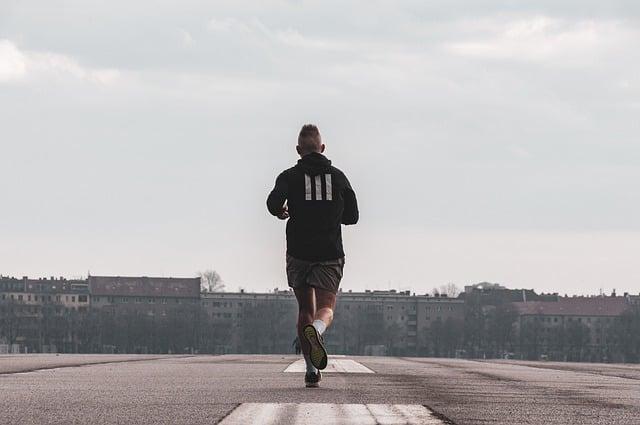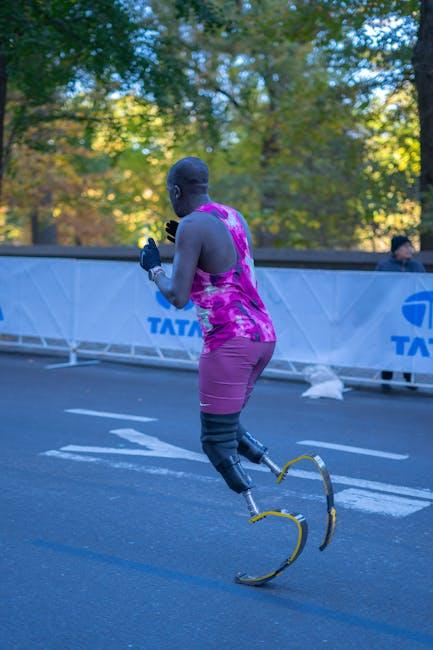Embarking on the journey of running is like opening the first page of a thrilling novel, where every step is a word and each mile a new chapter. For beginners, the allure of running promises a tapestry of health benefits, mental clarity, and a sense of achievement that is both personal and profound. Yet, like any great story, it requires a thoughtful approach to ensure that the narrative unfolds smoothly and safely. Whether you’re lacing up your sneakers for the first time or returning after a long hiatus, understanding how to start running safely is the key to a rewarding experience. In this guide, we’ll explore the essential steps to help you set off on the right foot, ensuring that your running journey is as enjoyable and injury-free as possible.
Choosing the Right Gear for Your Running Journey
Embarking on a running journey requires not just determination, but the right gear to ensure safety and enhance performance. As a beginner, the vast array of running equipment might seem overwhelming, but focusing on a few key items can set you on the right path. Here’s a simple guide to help you gear up for success:
- Running Shoes: Your most important investment. Look for shoes that offer good support and cushioning. Visit a specialty running store to get a gait analysis, ensuring you choose shoes that complement your stride.
- Moisture-Wicking Apparel: Opt for clothing made from technical fabrics that draw sweat away from your skin. This helps to regulate body temperature and prevent chafing.
- Reflective Gear: Safety first! If you’re running in low-light conditions, invest in reflective vests or bands to stay visible to others.
- Hydration Gear: Whether it’s a handheld bottle, belt, or hydration pack, staying hydrated is crucial, especially on longer runs.
- Smartwatch or Fitness Tracker: While optional, these devices can help you monitor your progress, set goals, and stay motivated.
By selecting the right gear, you not only enhance your comfort but also reduce the risk of injury, making your running experience enjoyable and sustainable. Remember, it’s not about having the most expensive equipment, but choosing what works best for you.

Crafting a Personalized Running Plan for Beginners
Creating a running plan that suits your personal needs and goals is essential for a successful start in your running journey. Begin by assessing your current fitness level, which will help you determine a realistic starting point. Consider incorporating a mix of walking and running intervals to build stamina gradually. As a beginner, it’s crucial to listen to your body and allow adequate rest days to prevent injuries. Aim for three sessions per week, focusing on consistency rather than intensity.
Incorporate the following elements into your plan to ensure a well-rounded approach:
- Warm-Up and Cool Down: Spend at least 5-10 minutes warming up with dynamic stretches and cooling down with static stretches to prepare your muscles and aid recovery.
- Variety: Mix up your routes and terrains to keep things interesting and engage different muscle groups.
- Progression: Gradually increase your running time or distance by no more than 10% each week to safely build endurance.
- Cross-Training: Include activities like cycling or swimming to improve overall fitness and reduce the risk of overuse injuries.
By tailoring your plan to your individual needs and preferences, you’ll set a strong foundation for a sustainable and enjoyable running habit.
Mastering Proper Running Techniques and Form
When embarking on a running journey, understanding the nuances of proper form can make a significant difference in both performance and injury prevention. Proper running techniques are essential for maximizing efficiency and minimizing strain on the body. Here are some key aspects to focus on:
- Posture: Maintain an upright posture with a slight forward lean. Keep your head up, eyes looking forward, and shoulders relaxed to prevent tension.
- Footstrike: Aim for a midfoot strike to distribute impact evenly. Avoid overstriding, which can lead to a heel strike and increased risk of injury.
- Arm Movement: Keep your arms bent at about 90 degrees. Swing them naturally at your sides without crossing the midline of your body to enhance balance and momentum.
- Cadence: Strive for a cadence of around 170-180 steps per minute. This can help reduce the impact forces on your legs and improve overall efficiency.
- Breathing: Develop a rhythmic breathing pattern that matches your stride, such as inhaling for two steps and exhaling for two steps, to ensure adequate oxygen intake.
Incorporating these elements into your running routine can lead to a more enjoyable and sustainable experience. Consistent practice of these techniques will help you build a solid foundation, allowing you to progress safely and confidently as a runner.

Building Endurance Safely with Incremental Progress
Embarking on a running journey can be invigorating, yet it’s essential to approach it with a mindset focused on gradual improvement. The key to building endurance without risking injury lies in making incremental progress. Start by setting realistic goals; these could be as simple as jogging for 5 minutes without stopping or completing a certain distance at a comfortable pace. Consistency is your ally, so aim to run a few times a week, progressively increasing your duration and intensity.
- Listen to your body: Pay attention to any signs of fatigue or discomfort.
- Incorporate rest days: Allow your muscles time to recover and grow stronger.
- Stay hydrated and fuel appropriately: Ensure your body has the necessary nutrients to sustain your new activity level.
By embracing a strategy that values patience and persistence, you’ll find your stamina improving over time, paving the way for longer, more satisfying runs.
Future Outlook
As you lace up your shoes and step onto the path of your running journey, remember that every stride you take is a testament to your commitment to health and well-being. Starting safely is not just about protecting your body, but also about nurturing a sustainable passion for running. Embrace the rhythm of your feet against the ground, the fresh air filling your lungs, and the steady progress you make with each step forward. Whether you run through city streets or quiet trails, know that you are part of a vibrant community of runners, all united by the pursuit of personal growth and vitality. So, take that first step with confidence, listen to your body, and let your running journey unfold at its own pace. Here’s to the miles ahead and the stories they will tell. Happy running!

